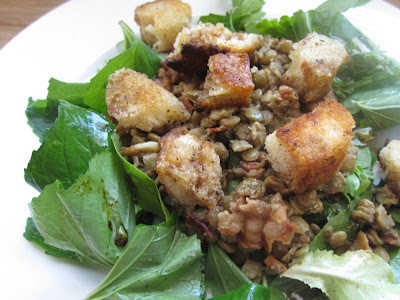These pignoli (pine nut) cookies are a traditional Italian cookie. The almond flavor is strong, and these chewy cookies have a macaroon-like texture. I enjoyed the cookies and they grew on me the more I ate them, but I probably won't make them too often, probably more for a special occasion or a cookie-variety plate.
Pignoli Cookies
adapted from Martha Stewart's Baking Handbook by Sara
7 ounces almond paste
1/2 cup granulated sugar
1/2 cup confectioner's sugar, plus more for dusting
2 large egg whites
1/2 tsp vanilla extract
3 T all purpose flour
a pinch of kosher salt
1 cup pine nuts
Preheat the oven to 350 degrees F, with racks in the center and lower third. Line two large baking sheets with parchment paper; set aside.
Crumble the almond paste in the bowl of an electric mixer fitted with the paddle attachment. Beat the almond paste and both sugars on medium speed for about 2 minutes, or until the mixture resembles coarse crumbs. Add the egg whites and vanilla; beat on medium speed until a smooth paste forms, about 4 minutes. Add the flour and salt; beat until combined, about 2 minutes. The dough will be very soft and tacky.
Spread pine nuts in a single layer on a plate. Scoop out a tablespoon of dough; using dampened fingers, drop the dough onto the pine nuts, coating one side. Transfer rounds, coated side up to the prepared baking sheets, about 2 inches apart. Repeat with remaining dough.
Bake, rotating sheets halfway through, until edges of cookies and pine nuts have turned golden brown, about 15-17 minutes. Transfer cookies on parchment to a wire rack to cool completely. Using an offset spatula, carefully loosen the cookies from the parchment. Dust cookies with confectioner's sugar. Cookies can be kept in an airtight container at room temperature for up to 4 days.












